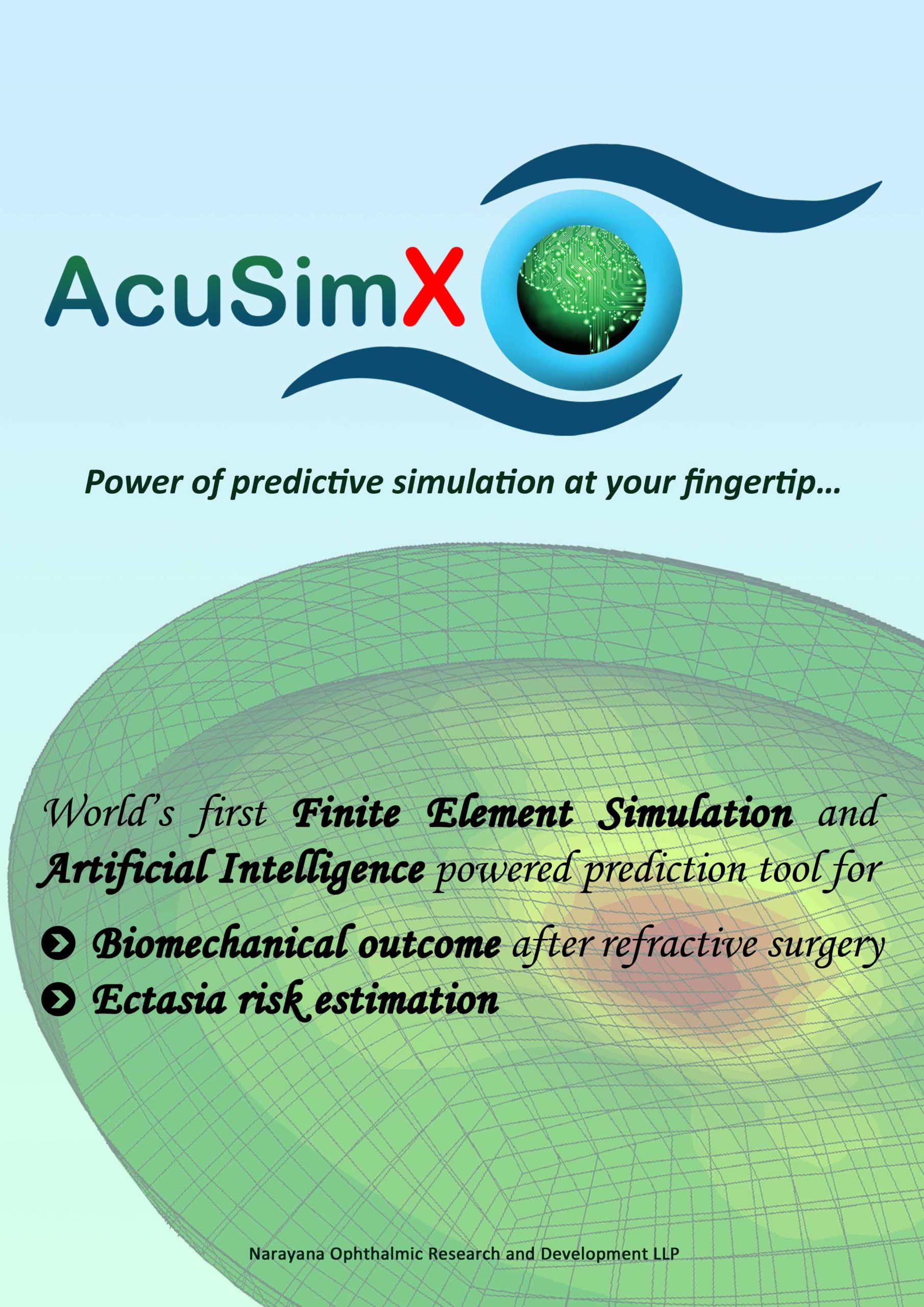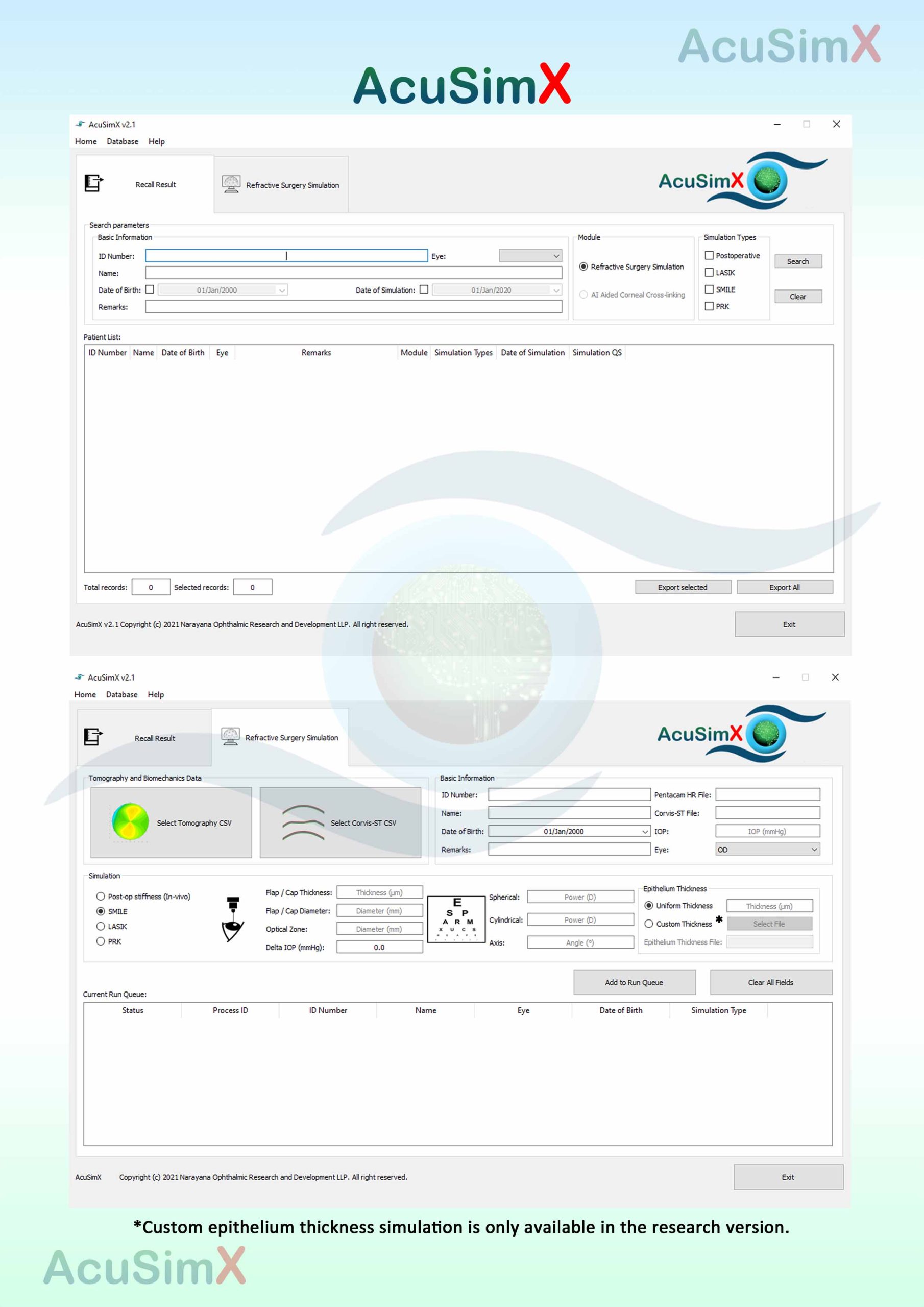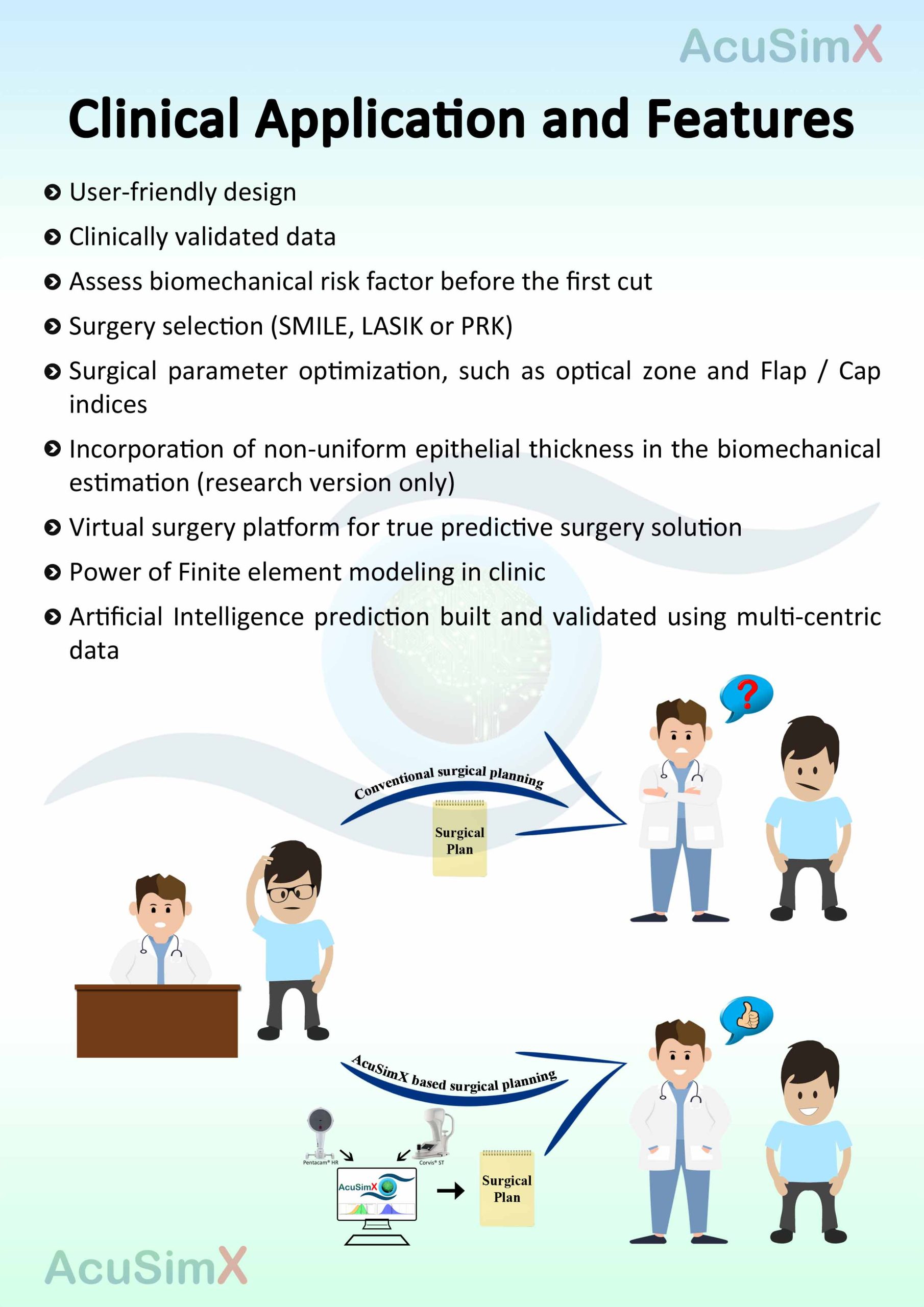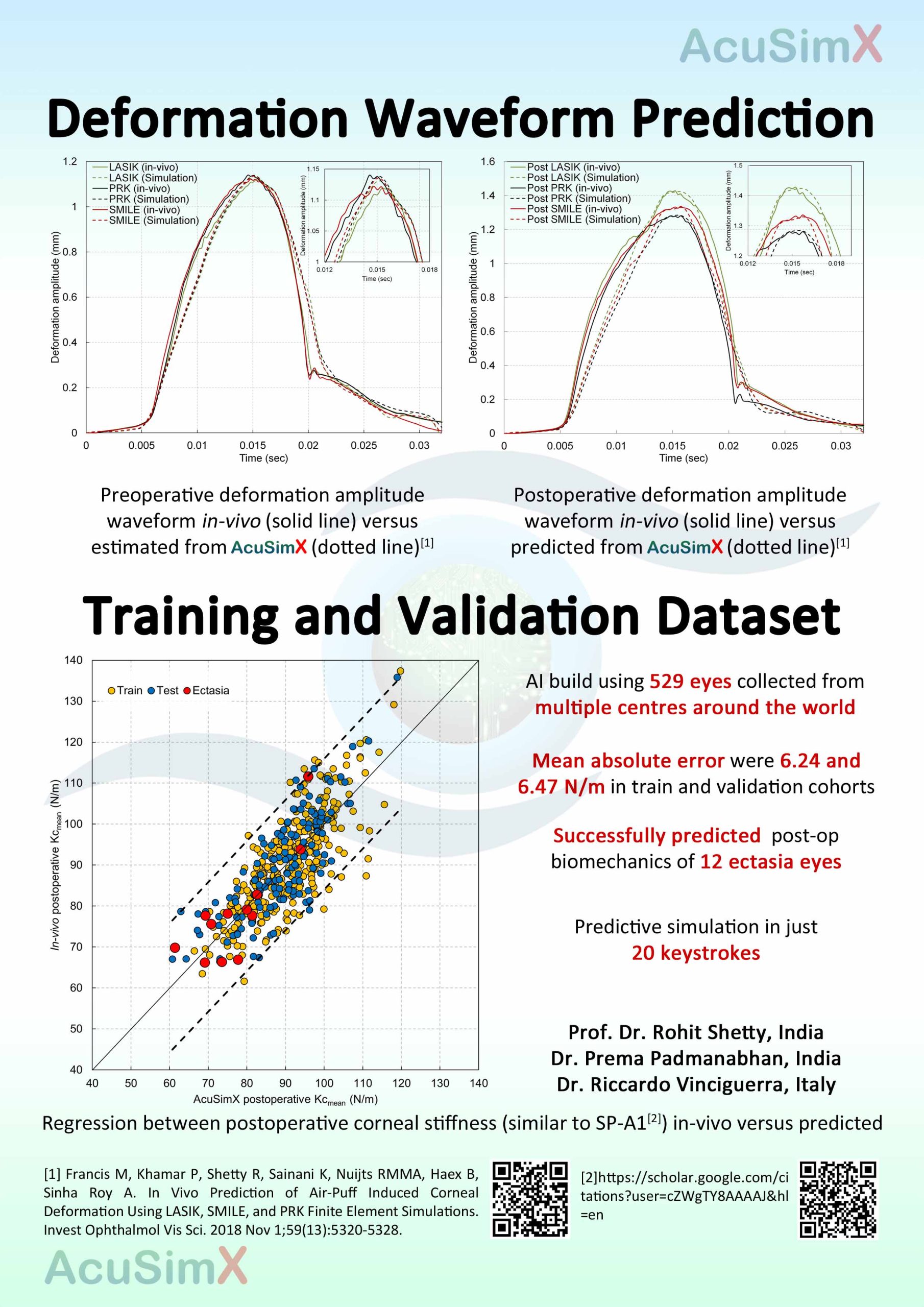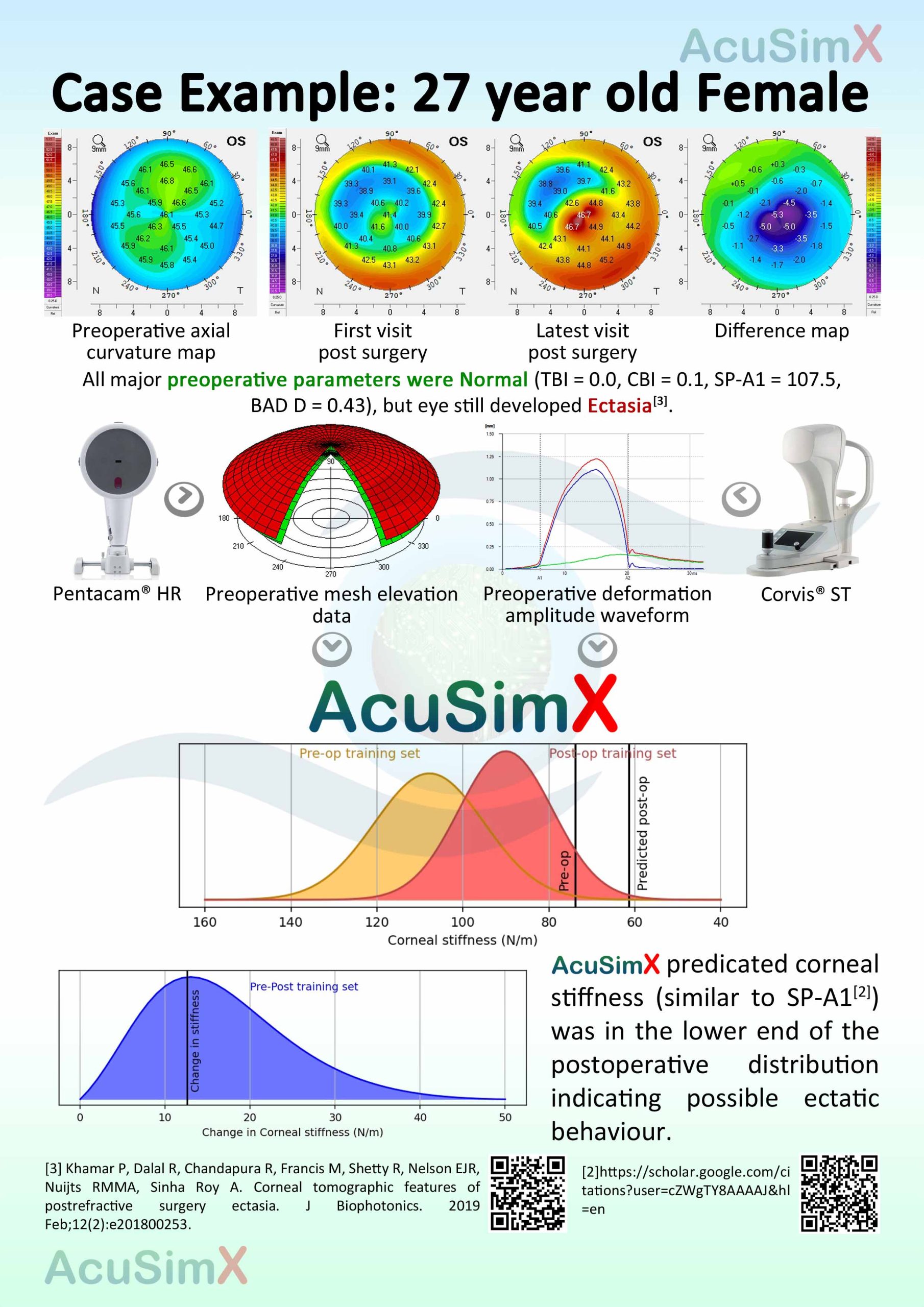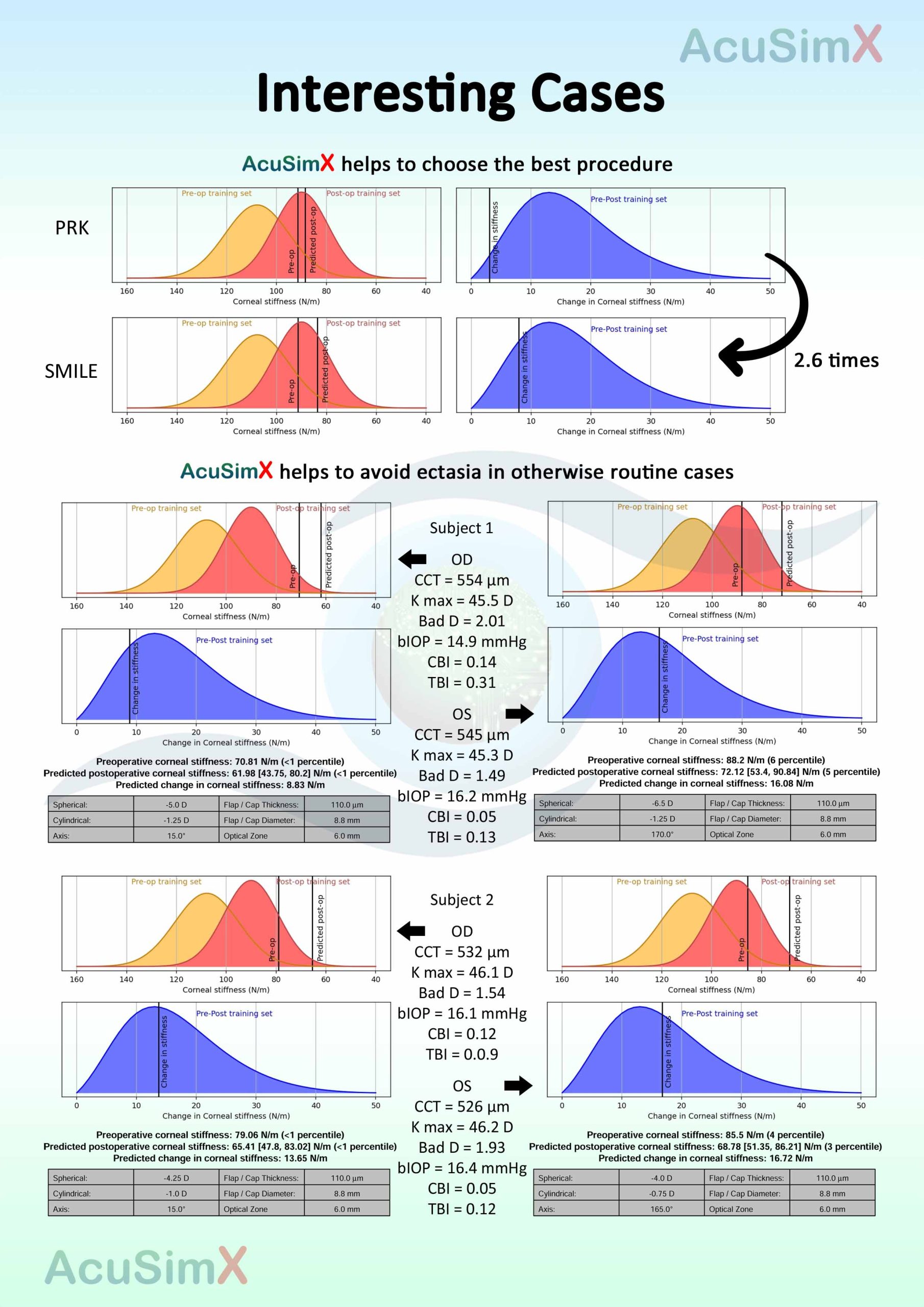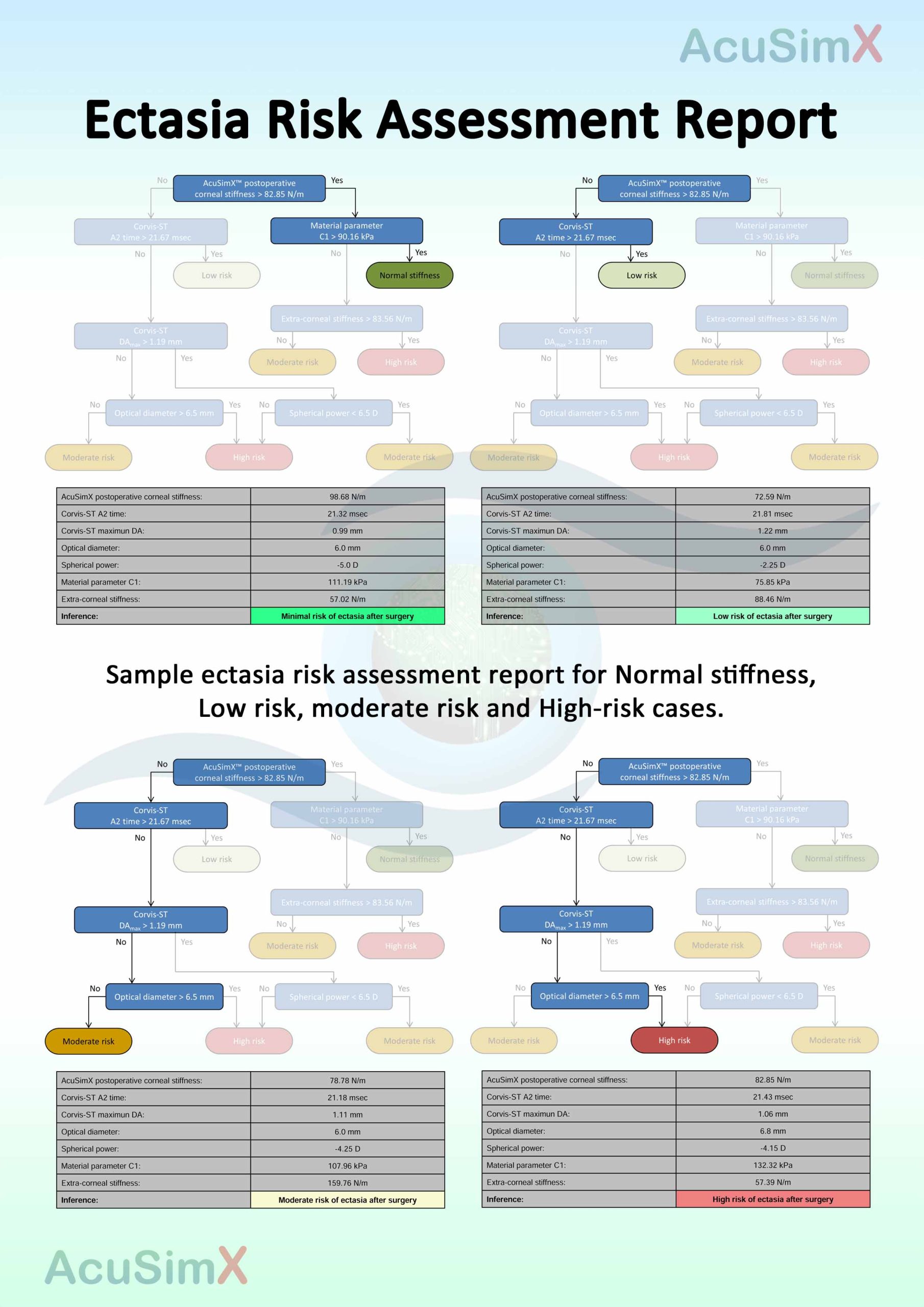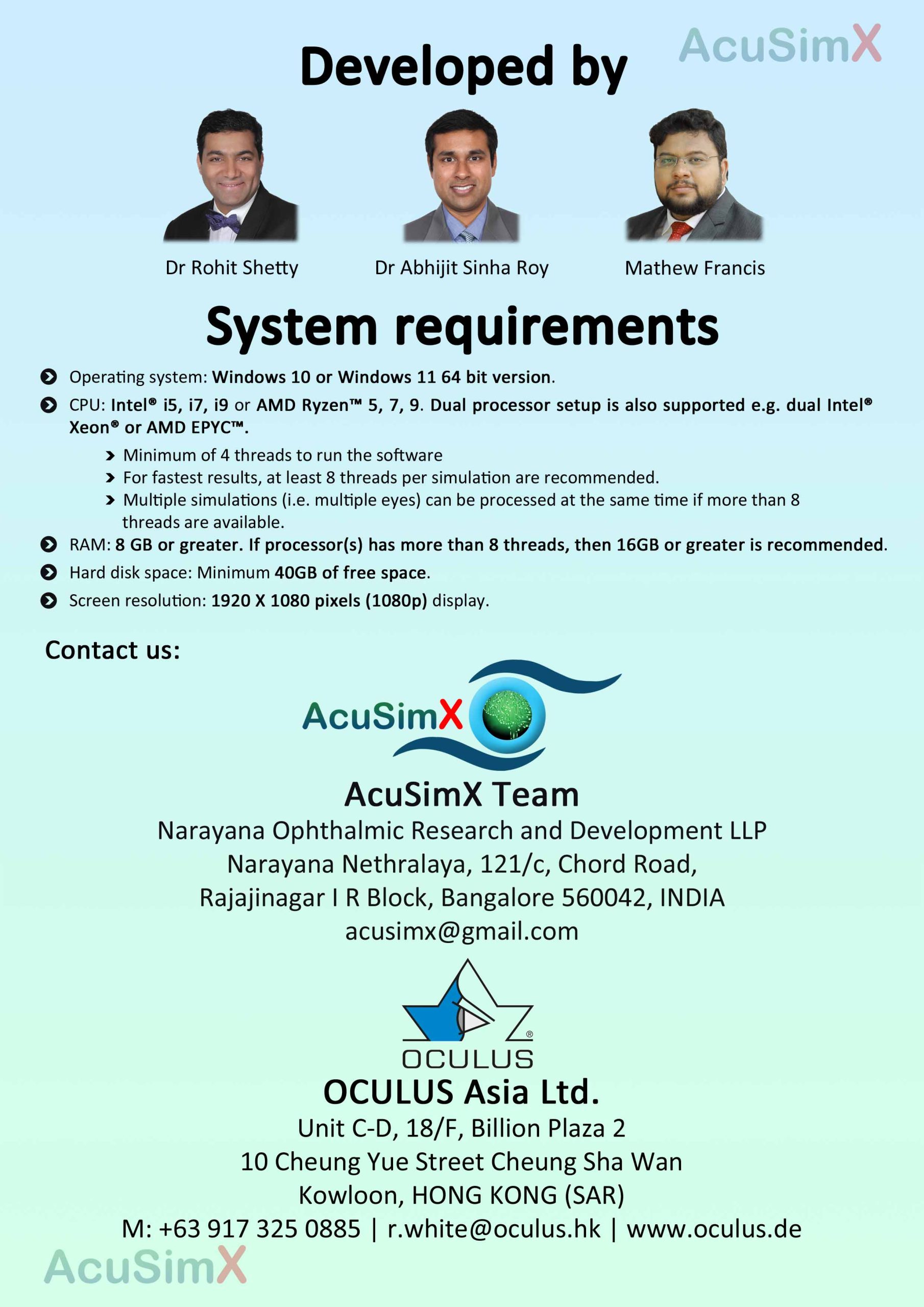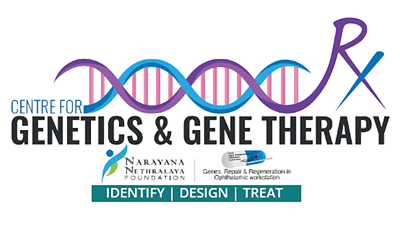Corneal Biomechanics
-
Narayana Netralaya Foundation > Corneal Biomechanics
The human eye is a complex biomechanical structure with muscles and tissue structures designed to achieve precise movement and focus to track objects, maintain and regulate pressure inside the eyeball against the environment, etc. The strength of the front surface of the eye called the cornea is crucial in maintaining good vision. The biomechanics arm of IBMS uses sophisticated tools to study the role of biomechanics in visual quality. Mathematical tools like viscoelastic models, finite element modelling etc also used in predictive modelling to foresee surgical and therapeutic outcomes.

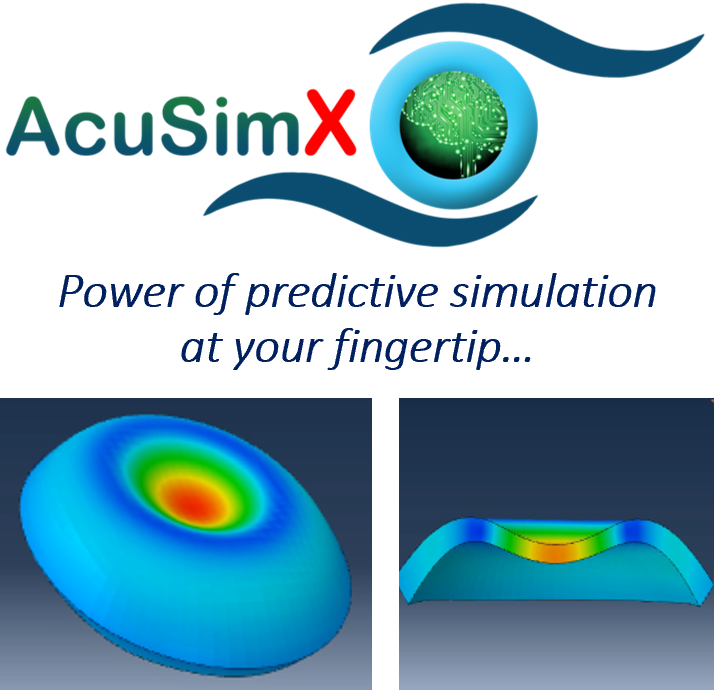
Laser refractive surgery is a safe procedure that helps to get rid of corrective glasses and contact lenses. Refractive surgery removes tissue and re-shaps the cornea to improve vision, but it weakens the cornea in this process. If the weakness goes beyond a point it will lead to a complication resulting in corneal bulging and declining vision called ectasia. This complication is significant as surgery volume is predicted to increase to 5.8 million despite the pandemic.
IBMS lab has developed a predictive simulation with Artificial intelligence to improve the safety of laser refractive surgery by understanding the strength of the cornea called AcuSimX. So, if the cornea is strong despite the tissue removal, it will not bulge out and cause vision problems. This software tool helps predict the corneal strength after surgery in advance, thus helping to avoid ectasia. It also helps in planning the treatment (customized corneal crosslinking) of a pre-existing bulge in the cornea (Keratoconus).
Similar tools are not common in medicine but are heavily used in other fields, e.g. space exploration. In the case of a spacewalk at the international space station, the whole process is choreographed on computers virtually. Similarly, AcuSimX helps the surgeon plan and refine the surgery, thus customizing surgery to a specific patient.
